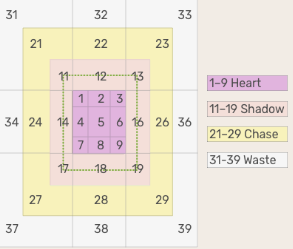Zac Gallen is No Longer an Effective Starting Pitcher
A brutal breakdown of how the Diamondbacks' ace has become a complete liability in the rotation.
The Arizona Diamondbacks have found another liability in their starting rotation. Their Opening Day starter, Zac Gallen, has contributed to those issues. In 17 starts, Gallen is 5-9 with a 5.75 ERA. Among qualified starters, he has the second-highest ERA behind Ben Brown of the Chicago Cubs.
Breaking down the fundamentals, Gallen is simultaneously having the worst strikeout (20.8%) and walk rates (9.9%) of his career. Having both happen at the same time suggests that major league hitters have figured out how to attack him. It’s also reflected in the batting average allowed, as they are hitting .252 against him this season. That mark is the worst average Gallen has allowed in his career.
And those hits aren’t cheap either. Gallen is also on track to surrender a career-worst in home runs. After 17 starts, he’s averaging 1.76 home runs per nine innings pitched (19 HR in 97 IP). In his career, he’s only been above 1.2 once (2021).
However, you’re not just here for the what but also the how and why part of the discussion. I’m going to break down what has been troubling Gallen and the effectiveness of his arsenal.
Poor Quality of Contact Allowed
In addition to the poor strikeout and walk totals, there’s a clear quality of contact issue that’s plaguing Gallen.
He’s giving up a hard-hit rate, or batted balls with an exit velocity of at least 95.0 MPH, at 46.4%. In addition to hard contact, hitters are having an easier time hitting the ball in the air to their pull field. 19.3% of the contact is pulled and in the air, the type of contact that leads to extra-base hits and home runs.
With hitters having little issue hitting the ball and driving it to their pull field, that’s yielded some tough marks for Gallen. He’s yielding a 12.7% barrel rate on batted ball contact, which ranks in the fifth percentile. Barrels are a subset of batted balls with specific exit velocities and launch angles that typically result in extra-base hits.
Since Gallen cannot miss bats or avoid free passes, these barreled balls result in runs coming on the board against him. His expected ERA, which takes into account quality of contact, strikeout, and walk rates, has him at 4.64. That sits in the 14th percentile among MLB pitchers.
Zac Gallen’s Fastball-Curveball Combo Ineffective
Over the years, Gallen has relied on a four-seam fastball and a knucklecurve as his bread-and-butter. When looking at Gallen’s history, he’s relied a lot on those two pitches to carry the load. Since the 2022 season, his combined usage of the four-seamer and the curveball has hovered around 70%.
When looking at his decline, those two pitches come front and center for his decline. The fastball has seen less chase, especially above the zone. In 2022 and 2023, the chase rate in Attack Zones 11-13 (Shadow/Top and Above the Zone) was over 50%. In 2025, it’s dropped to 32.4%. Throughout a season, that adds up to 130 fewer strikes, or four fewer per start.
The surprising pitch is the knucklecurve. As I previously wrote in a takeaways piece on Arizona Diamondbacks On SI, the curveball has been hit hard. Typically, it’s been a chase offering, designed to get hitters to swing at it at the bottom of the zone and below. He still gets a lot of swing-and-miss, as noted by a 42.3% whiff rate and a 29.3% putaway rate (two-strike pitches that result in a strikeout).
However, when he misses in the zone, he gets hit hard. Opposing hitters are batting .367 with a .796 slugging percentage against curveballs in the zone. It’s unclear if that's a result of poor location or if hitters wait him out and ambush that pitch.
What’s clear is Gallen needs to change up his plan of attack. It may be too late to salvage his 2025 season numbers and his free agent earning power, but he’ll have to do something to prevent his starts from being an automatic loss every fifth day.



